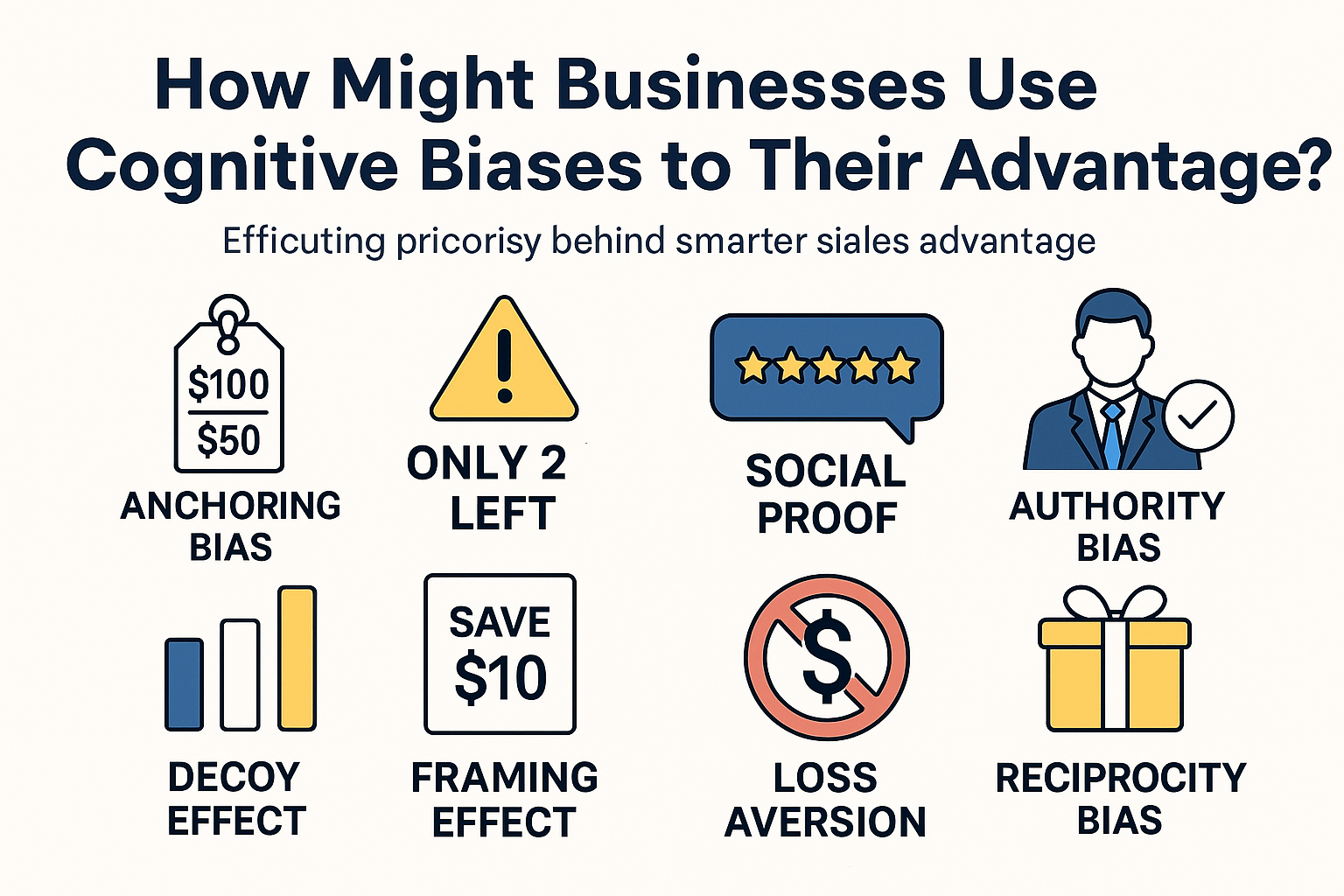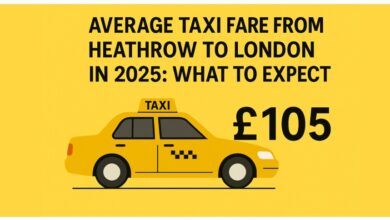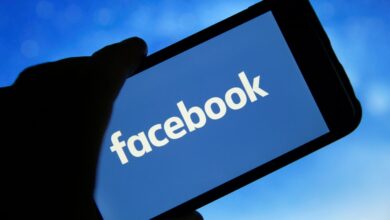How Might Businesses Use Cognitive Biases to Their Advantage?
Unlocking the Psychology Behind Smarter Sales, Marketing, and Customer Loyalty

Introduction
Understanding how the human brain makes decisions is one of the most powerful tools in modern business. Many successful companies today don’t just offer great products—they skilfully apply behavioural science to influence customer choices. But how might businesses use cognitive biases to their advantage? By leveraging psychological tendencies like anchoring bias, social proof, and scarcity bias, businesses can ethically guide consumer behaviour, improve conversions, and build lasting trust.
In this article, we’ll explore the science behind these strategies, break down key concepts such as FOMO marketing, loss aversion, and psychological pricing tactics, and show how these tools form the foundation of behavioural marketing strategies that work.
Understanding Cognitive Biases in Marketing
Cognitive biases are mental shortcuts that people unconsciously use when making decisions. These biases can lead to irrational choices—but they are also predictable. This predictability is what makes them so useful in marketing and sales.
What Are Cognitive Biases?
Cognitive biases are systematic errors in thinking that affect the decisions and judgments people make. In a business context, these errors can be used positively to nudge consumer behavior toward better outcomes for both the company and the customer.
Why Are They Important in Business?
Using cognitive biases in marketing is not about deception—it’s about framing offers and messages in ways that align with how the human brain naturally works. This process, often referred to as choice architecture, can increase sales, improve engagement, and make consumers feel more confident in their decisions.
Key Cognitive Biases Used by Businesses
Anchoring Bias and Pricing Psychology
Anchoring bias occurs when people rely heavily on the first piece of information they receive. Businesses use this by setting a high original price next to a discounted one. This makes the new price seem like a great deal. This is a classic example of pricing psychology in action.
Scarcity Bias and FOMO Marketing
“Only 3 left in stock!” or “Sale ends in 2 hours!”—these messages trigger scarcity bias and FOMO (fear of missing out). Scarcity increases perceived value and urgency, which often leads to faster purchasing decisions. This technique is especially common in limited-time offer strategies.
Social Proof and the Bandwagon Effect
People tend to follow others, especially when uncertain. Highlighting customer reviews, testimonials, or “Best Seller” badges taps into the bandwagon effect. These trust bias strategies make customers feel reassured they’re making the right choice.
Authority Bias and the Halo Effect
Authority bias occurs when people are influenced by figures of authority. A product recommended by a doctor or endorsed by a celebrity uses both authority bias and the halo effect. The credibility of the endorser enhances the perceived value of the product.
The Decoy Effect in Product Positioning
By offering three pricing tiers—with the middle one strategically priced—businesses use the decoy effect to guide customers to the desired option. This is an example of expert product positioning strategy that simplifies consumer decision-making.
Framing, Loss Aversion, and Reciprocity Bias
Framing Effect and Effective Product Presentation
The way information is presented (gain vs. loss) matters. Saying “You’ll save $50” is perceived differently than “You’ll lose $50 if you delay.” Businesses use this framing effect to encourage action.
Loss Aversion and Emotional Marketing Triggers
Loss aversion means people prefer avoiding loss over gaining something of equal value. Marketers use emotional marketing triggers to highlight what customers stand to lose by not acting now.
Reciprocity Bias: Give to Receive
Offering free trials, samples, or value-packed lead magnets appeals to reciprocity bias. Customers feel obliged to give back, often through a purchase or brand loyalty.
Advanced Cognitive Strategies in Business
Availability Heuristic and Frequency Illusion
When people frequently see a product or brand, they assume it’s popular or high quality. This is known as the frequency illusion or Baader–Meinhof phenomenon. Repetition in advertising builds brand familiarity and trust.
Simplicity Bias and Decision Fatigue Branding
Too many choices can lead to decision fatigue. Smart brands simplify offers and messaging to guide customers more clearly. This aligns with simplicity bias—people prefer easy decisions.
In-Group Bias and Belonging
Exclusivity and community-based marketing appeal to in-group bias. Brands that create VIP groups, loyalty programs, or “member-only” access make customers feel like they belong.
Zero-Risk Bias and Trust Building
Consumers often gravitate toward options that feel safe. Businesses reduce friction and increase conversions by offering money-back guarantees or highlighting “risk-free trials,” addressing the zero-risk bias.
Ethical Use of Cognitive Biases
While cognitive bias manipulation can be powerful, ethical marketing requires honesty. Misusing urgency, faking scarcity, or making false claims around expert endorsement marketing can damage long-term trust. Businesses that use behavioral economics in business should do so transparently and responsibly.
Conclusion: The Power of Nudging Consumer Behavior
So, how might businesses use cognitive biases to their advantage? The answer lies in understanding human psychology and using it to improve communication, value perception, and decision clarity. From anchoring bias to loss aversion, these tools form the backbone of effective behavioral marketing strategies.
By applying neuro-marketing tactics and psychological triggers in sales wisely, companies can not only increase sales but also enhance customer satisfaction and loyalty.
FAQ: Using Cognitive Biases in Business
Q1: Is using cognitive biases in marketing manipulative?
A: Not if done ethically. It’s about aligning marketing messages with how people naturally think and decide.
Q2: Which cognitive bias is most effective in boosting sales?
A: Anchoring bias and scarcity bias are often the most impactful, especially when paired with urgency and framing effects.
Q3: Can small businesses also use these techniques?
A: Absolutely. Simple changes like adding customer reviews, framing product benefits, or offering limited-time deals can significantly improve conversion.
Q4: What is the decoy effect in pricing?
A: It involves offering a third, less appealing option to make another option appear more attractive. It helps guide consumer decisions subtly.
Q5: Are these strategies applicable to online businesses only?
A: No. Both brick-and-mortar and online businesses can benefit from these strategies in advertising, sales displays, pricing, and customer interactions.



